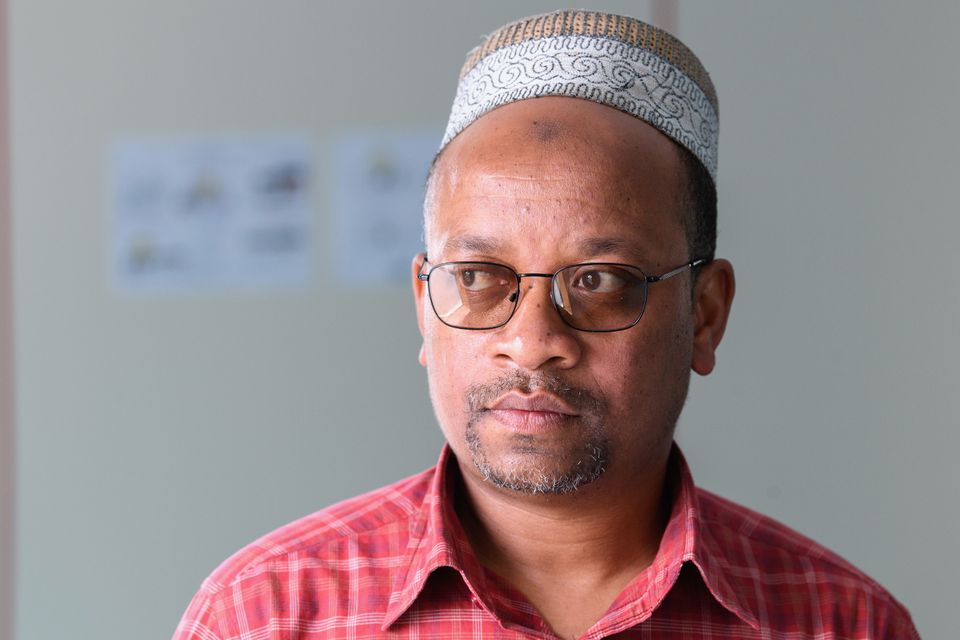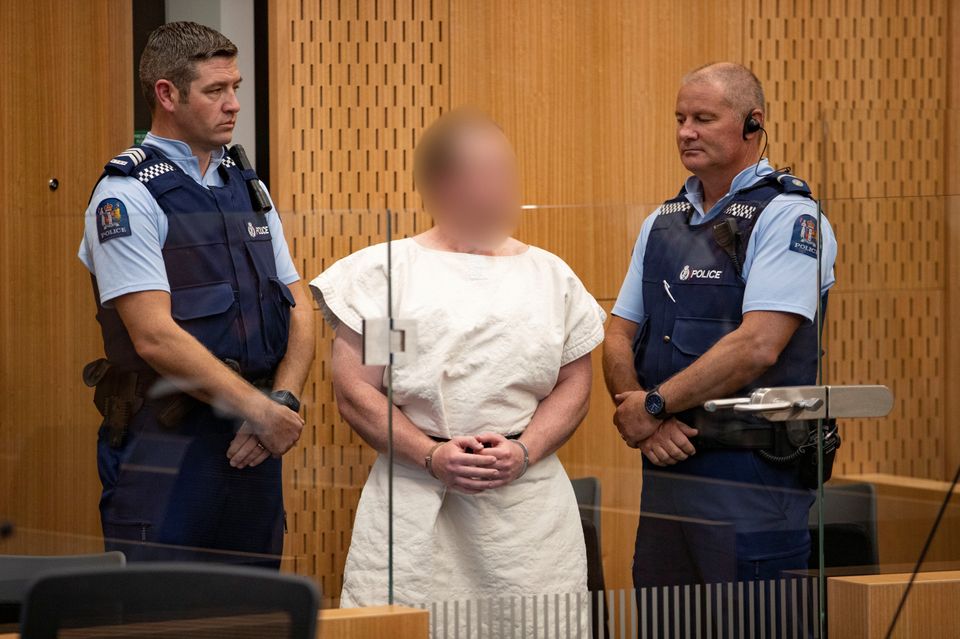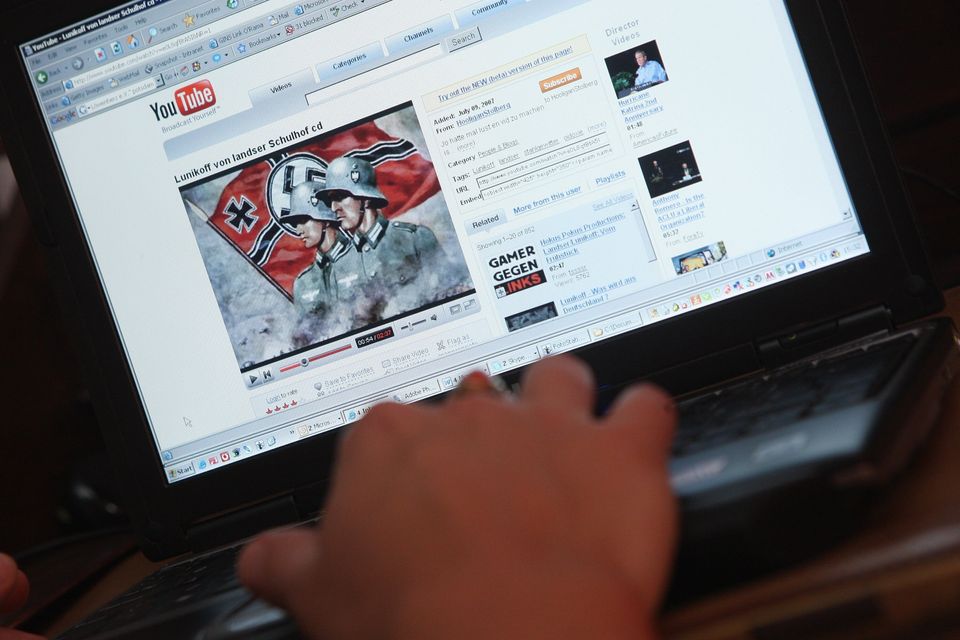
Earlier this week, the government of New Zealand released a comprehensive report on the 2019 Christchurch massacre, describing in chilling detail how a single white supremacist carried out the worst terror attack in the country’s modern history.
Although the nearly 800-page report, conducted by the Royal Commission, documents several major shortcomings by the country’s security agencies, it concludes that there were no signs that the attack was imminent and there was little that the state could have done to thwart the March 2019 killing of 51 Muslim worshippers at two mosques.
Prime Minister Jacinda Ardern on Tuesday apologised for major government failings described in the report, including that agencies had neglected to look into white supremacists, focusing their resources almost exclusively on the perceived threat of extremist Islamist terrorism. She also apologised that police had failed to enforce proper checks on firearm licenses as the shooter was acquiring his arsenal.
“The commission made no findings that these issues would have stopped the attack. But these were both failings, and for that, I apologise,” Ardern said after the report was released.
The report, however, is much more than a dry recitation of government missteps. It’s one of the more thorough and terrifying investigations into how anti-Muslim terror has become a fixture of news headlines over the last decade.
The report ultimately amounts to a searing indictment of institutional Islamophobia — in New Zealand’s national security apparatus and in big tech companies like YouTube — that helped transform a place of worship into the setting for a livestreamed pogrom.
It’s also a story of Muslim voices being ignored before 51 Muslim voices were silenced forever.

On March 15, 2019, white supremacist Brenton Tarrant opened fire on two mosques during Friday prayers — first at Al Noor Mosque in Christchurch and then at Linwood Islamic Centre in a nearby suburb. Inscribed on his guns were a slew of anti-Muslim memes and messages.
Upon entering the Al Noor mosque, a worshipper greeted Tarrant with “Hello, brother” before Tarrant killed him. Tarrant, an Australian native, livestreamed the massacre on Facebook as he made his way to the main prayer hall and shot worshippers indiscriminately from close range and opened fire again on people who were already injured and unable to escape.
His livestream ended as he drove towards the Linwood mosque. Once he arrived there, according to witnesses, he opened fire from the outside, shooting at the 100 worshippers through a window. He then continued to shoot as he made his way inside the mosque.
After a worshipper threw a heavy credit card reader and one of Tarrant’s discarded guns at him, Tarrant fled and was later apprehended by police after a car chase.
The victims spanned generations and nationalities. Of the 51 Muslims, 47 were men and four were women. The youngest victim was just 3 years old and the eldest was 77.
‘They Didn’t Listen’
The attack brought rising Islamophobia across the globe into focus, offering proof of how the normalisation of anti-Muslim rhetoric and policies have deadly consequences.
The Christchurch report quotes many anonymous Muslim New Zealanders who criticised authorities for ignoring repeated warnings about the rise in anti-Muslim sentiment leading up to the attack.
“The events of the day were presaged by so many tell-tale signs of its coming, all of which were evident and all of which were ignored by those who had power to act,” one Muslim New Zealander said.
“We warned them of dangers, and they didn’t listen,” said another.
“It is inconceivable that New Zealand’s professional internet community was aware of the threat posed by alt-right radicals but [the New Zealand Security Intelligence Service] were not,” said yet another.

Muslims interviewed as part of the report expressed anger over the “catastrophic failure” of the country’s intelligence agencies, which they felt had downplayed the rise of Islamophobia and right-wing extremism while simultaneously being hyperfocused on the perceived threats of Muslim individuals.
“They were watching us, not watching our backs,” said one Muslim individual in the report.
The report concludes that the intelligence agencies had, in fact, spent an “inappropriate” and disproportionate amount of time and resources focused on the potential threat of Islamic terrorists in the months leading up to the attack, a problem that may be persisting in the country.
“Even now, we are still being engaged with like we are the threat,” was the conclusion of one Muslim focus group interviewed for the report, which observed that counterterror agencies appear to have a “limited competency when it comes to Muslim culture.”
Ultimately, the report documents both the trauma and resilience of Muslims in New Zealand.
“We stopped feeling safe in New Zealand after the 15 March attacks,” one of the Muslim focus groups told the report’s authors. “This event has shaken us, especially our women who tend to be the ‘flag bearers’ as their dress is a visual demonstration of their faith.”
The Myth of the ‘Lone Wolf’
One of the big questions the report sought to answer with their research was: Did Tarrant act alone?
“Yes, he was a lone actor and no one else was involved in the planning, preparation or execution of the terrorist attack,” the report states. “There is no evidence that anyone else was aware of his plans or provided personalised encouragement.”
Still, the report is careful to note that “it is, however, likely that his thinking was affected by what was said in far-right online communities and other far-right material he was able to source from the internet.”
In recent years, many politicians and journalists have frequently used the term “lone wolf” to describe terrorists like Tarrant with no formal membership in organised extremist groups.
But this framing has received considerable pushback from those studying online radicalisation, like Jared Cohen, the chief executive of Jigsaw, the research arm of Google. Cohen wrote in a recent report that the “myth” of the lone wolf “obscures the vast, underlying infrastructure of white supremacist online communities around the world.”
“Radicalisation is an inherently social process — one that thrives openly on the internet,” Cohen wrote, pointing to the ways in which extremists “move fluidly between mainstream and fringe platforms” — including those owned by Cohen’s employer.
The Christchurch report published this week offers alarming examples of this process. An entire section is devoted to documenting donations Tarrant made online to white supremacist websites and figures across the globe, many of them in America.
In the month after the deadly “Unite the Right” white supremacist rally in Charlottesville, Virginia — where a neo-Nazi drove his car into a crowd of counterprotesters — Tarrant donated money to two of the biggest American neo-Nazi websites, The Daily Stormer and The Right Stuff. He also gave money to the National Policy Institute, the white supremacist group led by fascist American figurehead Richard Spencer.
Outside the US, Tarrant gave money to far-right, Islamophobic Canadian website Rebel News, and to European neo-fascist organisations including Generation Identitaire in France and the Identity Movement in Germany.
“Thank you that really gives me energy and motivation,” Austrian neo-fascist leader Martin Sellner wrote to Tarrant in a January 2018 email, thanking him for a $2,308.97 donation, according to the report.
“If you ever come to Vienna,” Sellner added, “we need to go for a café or a beer.”

The report also details the ways in which Tarrant was inspired by another so-called “lone wolf” terrorist — Anders Breivik, the Norwegian white supremacist who killed 77 people in 2011 to promote his manifesto against the “Islamisation of Europe.”
A chilling moment in the report describes how a copy of Breivik’s manifesto was on an SD card found inside a drone Tarrant used to surveil the mosques he’d later attack.
Breivik’s “manifesto and his actions provide considerable guidance for would-be extreme right-wing terrorists” like Tarrant, the report states.
Tarrant followed much of Breivik’s advice in preparing for his terror attack, including “joining a gym,” “bulking up with steroids” and “joining rifle clubs to gain firearms expertise.”
As Tarrant prepared for his rampage, he inscribed his gun with the name of another modern “lone wolf” terrorist — Alexandre Bissonnette, who killed six people at a Quebec mosque in 2017.
Every step of the way, Tarrant was copying the tactics of, and paying tribute to, the white supremacist “lone wolves” who came before him, all radicalised by the same sprawling far-right ecosystem online.
“We acknowledge a view is held in the community that, while the individual may have acted alone on 15 March 2019, he formed part of a network of people holding similar views to him and therefore was not, in that sense, a ‘lone actor,’” the report states.
A ‘Completely Predictable’ Story Of YouTube Radicalisation
The report emphasises that although Tarrant may have sometimes visited extremist web forums, his radicalisation into a murderous neo-Nazi was fueled mostly via videos he watched on one of the world’s largest and most accessible online platforms: YouTube.
Tarrant, according to the report, explained in interviews that “YouTube was, for him, a far more significant source of information and inspiration” than fringe far-right sites.
The report said this is consistent with a review of Tarrant’s internet use. “Although he did frequent extreme right-wing discussion boards such as those on 4chan and 8chan,” it reads, “the evidence we have seen is indicative of more substantial use of YouTube.”
Becca Lewis, an extremism researcher at Stanford University who authored a widely read 2018 report on the way YouTube enables far-right radicalisation, said she was “furious and heartbroken” while reading the Christchurch report this week, pointing to the ways in which the company has repeatedly failed to deal with extremists on its platform.
“What’s gut-wrenching about reading the report is just how completely predictable that story is,” Lewis told HuffPost. “Anyone who has been researching this space for a while could tell you that YouTube would have played a role, and that the figures who he would have been interested in would include someone like Stefan Molyneux.”
Molyneux is a Canadian white nationalist propagandist who had nearly 1 million subscribers on YouTube — one of whom may have been Tarrant.
The report notes that on January 15, 2017, the future mass shooter donated $138.89 via PayPal to Molyneux’s YouTube channel.
In the years leading up to the Christchurch massacre, researchers like Lewis, along with civil rights groups like the Southern Poverty Law Center, repeatedly raised alarms about the proliferation of white nationalist channels like Molyneux’s on YouTube.
It was only after the massacre that YouTube agreed to change its algorithm so that it would recommend fewer extremist videos to users — a common way in which people have been radicalised on the platform.
But Molyneux himself — along with other infamous white supremacist figureheads on YouTube like Richard Spencer and David Duke — wasn’t kicked off YouTube until a year after the Christchurch shooting.

This underscores the ways in which YouTube and other tech companies have played a game of whack-a-mole with extremists on their platforms, kicking off white nationalists and other bigots only after public outcry.
YouTube and other Silicon Valley companies, explained Lewis, have historically been “deeply libertarian projects” opposed to regulating their platforms out of the “assumption that more speech is better.”
Ultimately, YouTube has a business interest in having as much content as it can possibly monetize on its platform, Lewis argued, including hate speech.
“And that, I think, is something that they haven’t grappled with, and they’re not going to grapple with it as long as they’re able to avoid it, because that’s more of an indictment of the overall project in the platform,” she added.
In the meantime, New Zealand’s Prime Minister Ardern specifically called out YouTube in a speech this week after the Christchurch report was released.
“What particularly stood out was the statement that the terrorist made that he was ‘not a frequent commentator on extreme right-wing sites and YouTube was a significant source of information and inspiration,’” Ardern said. “This is a point I plan to make directly to the leadership of YouTube.”
Reached for comment, a YouTube spokesperson told HuffPost that the company has made “significant progress in our work to combat hate speech” since the Christchurch attack, pointing to changes in the video-recommendation algorithm, a “5x spike” in the number of hate videos removed, and the termination of channels mentioned in the report.
“We will continue our work together with the Prime Minister, as well as governments, industry partners, and communities around the world to combat the spread of violent extremism online,” the YouTube spokesperson said.
As of this writing, a cursory search of YouTube shows multiple anti-Muslim videos produced by the far-right Rebel News, which has 1.4 million subscribers on the platform, and to whom Tarrant once donated $106.68. Among those videos is one featuring well-known white nationalist Faith Goldy explaining — with falsehoods, and in explicitly anti-Muslim terms — “the truth about Islam and the crusades.”